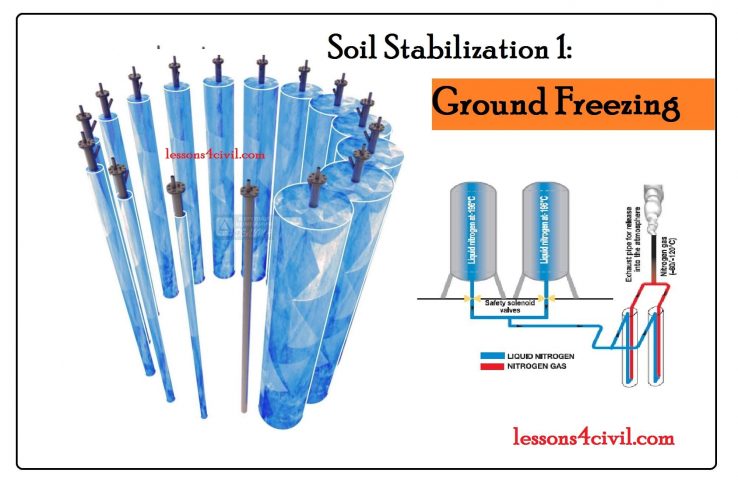Soil Stabilization: Ground Freezing
introduction
Ground freezing is an effective technique stabilized wet soils and prevent its collapse in many construction projects such as tunneling and excavation. This method is also used to prevent the soil contamination caused by pollutant materials used in excavations. The effectiveness of this method has been proven during the recent century.
As it is illustrated in the figures, to freeze the wet soil, several pipes are inserted into soil layers and feed with refrigerants. As a result soil get frozen and hardened as strong as stone. These refrigerants are usually a salty mixture or liquid nitrogen.
Here is a brief summary about application of ground freezing technic in different areas:
Tunneling projects :
Ground freezing provides short-term stabilization for full face excavation. Besides, in many tunneling projects the presence of water can be confronted by using frozen soil as a water proof layer. If the face materials are not identical, we can freeze them to reach a uniform face which is desirable in blasting and TBM methods.
Pipeline installation projects
To install or repair deep pipes we can freeze the soil as a trench protection technic. Moreover freezing can confront the problematic groundwater table in excavation process.
Restricting the contaminants
Since the beginning of twentieth century, environment protection has come into view of engineering constructions. Many geotechnical activities, such as sampling, might use contaminant materials. The spread of these materials can be restricted by freezing the soil. moreover, to study the scope of soil contamination we need to take deep samples. In such cases, freezing the soil layers can help to take more intact samples and to obtain more realistic information about the contaminated zone.
All in all, freezing method is highly advantageous whenever soil stabilization is needed. Whether you are taking sample of excavating a we unstable soil, using this methods will reduces the hazards and boast the efficiency of the operation.



Comments